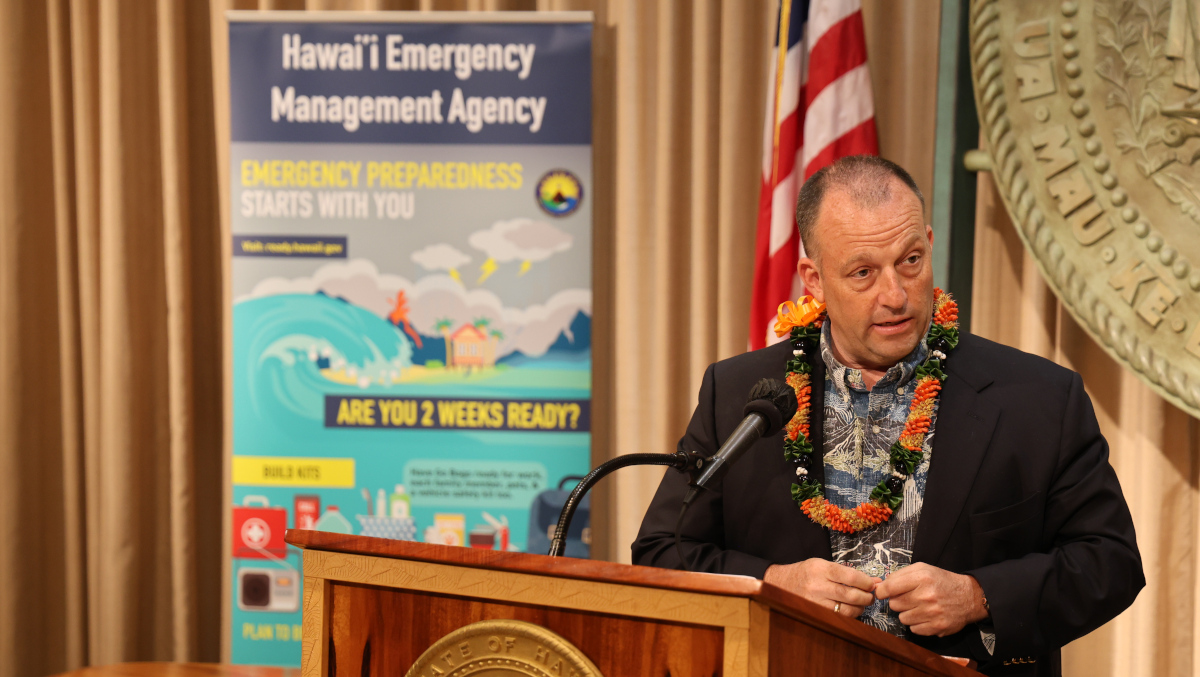(BIVN) – April is Tsunami Awareness Month in Hawai‘i.
On Monday, state officials gathered to make a proclamation, highlighting “the importance of Awareness, Education and Action in preparing for tsunamis.”
“Tsunamis are life-changing events,” said Governor Josh Green. “It is imperative to know what to do to protect lives and property from tsunamis. Being aware, educated and ready to take action will save lives.”
From the Office of the Governor:
Representatives from the Pacific Tsunami Warning Center (PTWC), International Tsunami Information Center (ITIC), the Hawai‘i Emergency Management Agency (HI-EMA) and county emergency management agencies attended to highlight awareness of tsunami alerts and warning protocols throughout the state.
“Tsunamis can strike with very little warning and devastate communities,” James Barros, HI-EMA administrator, said. “With Tsunami Awareness Month beginning on the anniversary of the deadly April Fools’ Day tsunami in 1946, we’re reminded not only of the damage and sorrow it caused, but also that we need to be prepared for the next one.”
“Tsunamis can occur anywhere, at any time,” added Laura Kong, Ph.D., director of ITIC. “There is no ‘tsunami season.’ Hawai‘i must always be prepared to take action. In our state, 293 people have been killed by tsunamis since 1900 and 158 of those lost were from the 1946 disaster alone.”
Tsunamis are generated by earthquakes, volcanoes, landslides, or other powerful events that forcibly move large amounts of water. They can produce a wall of water 50 feet high or more, and travel hundreds of yards inland when they reach shore. Hawai‘i faces hazards both from distant tsunamis, which take hours to reach the state, and local tsunamis which can arrive in minutes after an earthquake within the state.
What to do in case of a Tsunami in Hawaii (HI-EMA via YouTube)
Tsunamis are generated by earthquakes, volcanoes, landslides, or other powerful events that forcibly move large amounts of water. They can produce a wall of water 50 feet high or more, and travel hundreds of yards inland when they reach shore. Hawai‘i faces hazards both from distant tsunamis, which take hours to reach the state, and local tsunamis which can arrive in minutes after an earthquake within the state.
“Tsunamis generated throughout the Pacific Rim of Fire in recent years from Tonga to Japan have left vast devastation in their wakes,” said Chip McCreery, Ph.D., director of PTWC. “We don’t know where or when a big event might strike. Preparing today will help us all to respond more quickly and effectively in a real emergency.”
Barros agreed. “Being prepared, knowing evacuation routes, and having a plan with family and neighbors makes you part of the solution if a devastating event like a tsunami hits.”
HI-EMA has initiated a pilot project to increase youth awareness through selected ambassadors from St. Louis School. The ambassadors toured the Pacific Tsunami Museum in Hilo and will share what they learned with fellow students. HI-EMA intends to broaden its youth outreach to other schools.
The State says one-stop information on Hawai‘i tsunamis is available at
hawaiitsunami.org.


by Big Island Video News6:42 pm
on at
STORY SUMMARY
HONOLULU - Governor Josh Green, M.D., on Monday held a news conference to talk about being prepared in the event that a tsunami hits Hawaiʻi shores.